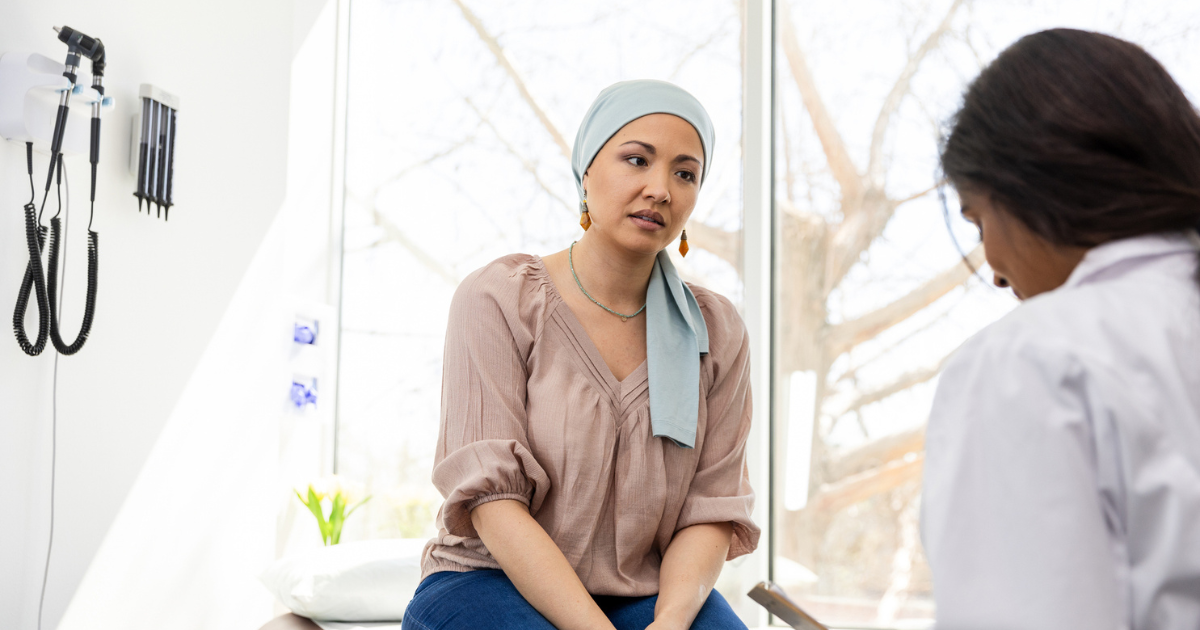How does cancer treatment affect your skin?

Cancer treatment can significantly impact your skin, causing changes that affect comfort and appearance. While these side effects can be concerning, most are manageable with proper care and medical support.
Jesse Hirner, MD, a dermatologist specializing in cancer supportive care (oncodermatologist) and melanoma treatment, provides insight into understanding and managing these skin-related changes during cancer therapy.
Common skin changes during immunotherapy
Immunotherapy has become one of the most frequently used cancer treatments, and skin reactions are often a side effect. "The most common skin eruption is a temporary itchy rash that occurs early in treatment,” Dr. Hirner says. “It usually goes away on its own, and people are able to continue receiving their treatment.”
This type of rash typically:
- Begin on the trunk of the body (chest, abdomen and back) and can spread to the arms and legs.
- Cause itching as the main symptom.
- Respond well to treatment with topical steroids.
- Vary in severity depending on the individual and specific drug used.
The good news is that these skin reactions are treatable. "We see lots of different types of skin problems with immunotherapy,” Dr. Hirner says. “Most are mild, but some are quite severe. We're virtually always able to help them get better.”
Targeted therapy side effects
Drugs called EGFR and HER-2 inhibitors are used to treat certain breast, colon and lung cancers. These medications can cause distinct skin changes that may be distressing but are manageable with proper care.
"They commonly cause acne that can be quite severe,” Dr. Hirner says. “That's always a treatable problem. We're able to correct it while people stay on their treatment."
Managing these skin reactions effectively is important because it allows patients to continue receiving their planned treatment, which may improve their outcomes.
Chemotherapy's impact on skin, nails and hair
Chemotherapy affects rapidly dividing cells in the body, including skin cells, leading to various side effects:
- Painful palms and soles of feet (particularly common in patients with colon and breast cancer).
- Loss of fingernails or bleeding under the nails.
- Skin and nail darkening (which typically resolves after treatment ends).
- Hair loss.
Promising prevention and treatment for chemotherapy-induced hair loss are emerging, including scalp cooling. This involves wearing a special cap that is connected to a cooling system while receiving chemotherapy.
"Scalp cooling is a great way to reduce your risk of having chemotherapy-associated hair loss," Dr. Hirner says. "It can also potentially allow for more rapid recovery of your hair after chemotherapy has stopped."
Studies have indicated potential benefits of using medication for the prevention and management of hair loss associated with chemotherapy. Dr. Hirner highlights a recent study indicating that minoxidil is effective in regrowing hair after breast cancer treatment.
Managing oral side effects
The inside of the mouth is particularly sensitive to cancer treatments. "The most common problem inside the mouth associated with cancer treatment is ulcers, which are often painful. And those mostly occur with chemotherapy," Dr. Hirner explains.
Several management strategies can help:
- Keeping ice chips in the mouth during infusion.
- Oral rinses with protective benefits.
- Topical steroids administered through oral swish-and-spit solutions.
- Over-the-counter oral pain relievers to make eating and drinking more comfortable.
Preventive measures for skin protection
Taking proactive steps to protect your skin during cancer treatment is important. Dr. Hirner emphasizes that prevention strategies should be tailored to specific treatments:
For radiation therapy:
- Use lukewarm water and gentle cleansers without harsh ingredients.
- Avoid products containing alcohol, fragrances or dyes.
- Apply emollients (creams or ointments) regularly.
- Consider using steroid cream or ointment as recommended by your care team.
For EGFR inhibitors:
- Practice diligent sun protection.
- Use daily moisturizer to combat skin dryness.
- Apply prescribed steroid cream as directed.
- If prescribed, take recommended antibiotics, often at low doses to maintain anti-inflammatory benefits while minimizing side effects.
Special considerations for transplant patients
Stem cell transplant patients face a higher risk of skin cancer due to weakened immune systems, necessitating careful skin care.
"It's important for these patients to protect their skin from the sun after their transplant, both because sun exposure can precipitate graft versus host disease and because of their immunosuppression," Dr. Hirner says.
Protection methods include:
- Regular application of SPF 30 or higher broad-spectrum sunscreen.
- Wearing protective clothing when outdoors.
- Staying in shaded areas during peak sun hours.
- Examining your skin once monthly for any concerning moles.
- Seeing a dermatologist annually for a skin exam.
The bottom line
While skin changes during cancer treatment can be concerning, Dr. Hirner emphasizes that most side effects are manageable with proper care and medical support. Be sure to report any new or worsening skin changes to your care team, as early intervention often leads to better outcomes.







